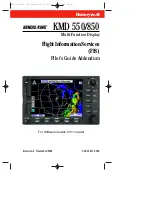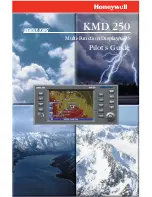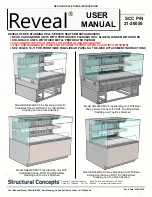
PRIMUS
r
1000 Integrated Avionics System
A28--1146--112--00
9-1
Troubleshooting
9. Troubleshooting
This section describes conditions associated with suspected
malfunctions in the flight control system. Proper awareness helps the
pilot make write--ups that convey the necessary information to
maintenance personnel. As a result, unnecessary and expensive flight
time to verify pilot squawks can be greatly reduced.
This section does not imply that the pilot must troubleshoot the system
down to the box level. Rather, the paragraphs that follow contain
information required to give the pilot a complete understanding of
system problems.
CAUTION
THE FLIGHT CONTROL SYSTEM HAS BEEN DESIGNED TO EX-
HIBIT A HIGH DEGREE OF FUNCTIONAL INTEGRITY. HOWEVER,
THE USER MUST RECOGNIZE THAT IT IS NOT PRACTICAL TO
MONITOR AND/OR SELF--TEST FOR ALL CONCEIVABLE SYS-
TEM FAILURES. IT IS POSSIBLE THAT THE SYSTEM CAN OPER-
ATE ERRONEOUSLY WITHOUT A FAULT INDICATION. IT IS THE
RESPONSIBILITY OF THE PILOT TO DETECT SUCH AN OCCUR-
RENCE USING CROSS--CHECKS WITH REDUNDANT OR CORRE-
LATED INFORMATION AVAILABLE IN THE COCKPIT.
PILOT WRITEUP
The following paragraphs present general guidelines for making pilot
writeups in the logbook. As a guideline, the following two rules should
always be adhered to.
Rule 1
-- Before making an entry, determine conditions under which the
problem exists.
Rule 2
-- When making an entry, always write a complete description
of the problem.
NOTE:
It is important that all system anomalies be correctly and
completely logged in. Effective communication significantly
improves the troubleshooting process.






































